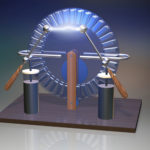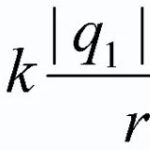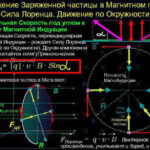The concept of electric potential is one of the important foundations of the theory of electrostatics and electrodynamics. Understanding its essence is a prerequisite for further study of these sections of physics.
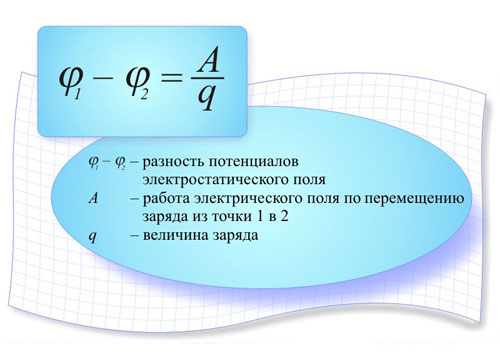
Contents
What is the electric potential
Let a unit charge q be placed in the field created by a stationary charge Q, on which the Coulomb force F=k*Qq/r.
Hereinafter k=((1/4)*π* ε* ε), where ε0 — is the electrical constant (8.85*10-12 F/m), and ε dielectric constant of the medium.
Introduced by charge under the action of this force can move, and the force will do some work. This means that a system of two charges has a potential energy that depends on the magnitude of both charges and the distance between them, and the value of this potential energy does not depend on the magnitude of the charge q. This is where the definition of the electric potential is introduced: it is equal to the ratio of the potential energy of the field to the magnitude of the charge:
φ=W/q,
where W is the potential energy of the field created by the system of charges, and the potential is an energy characteristic of the field. To move a charge q in an electric field for some distance, it is necessary to spend some work to overcome the Coulomb force. The potential of a point is equal to the work it takes to move a unit charge from that point to infinity. It should be noted that:
- this work will be equal to the loss of potential energy of the charge (A=W2-W1);
- the work does not depend on the trajectory of the charge.
In the SI system, the unit of potential is one Volt (denoted by V in Russian-language literature, V in foreign literature). 1 V=1J/1 Kl, i.e., we can talk about the potential of a point of 1 Volt, if it takes work of 1 Joule to move a charge of 1 Kl to infinity. The name was chosen in honor of Italian physicist Alessandro Volta, who made a significant contribution to the development of electrical engineering.
To visualize what potential is, it can be compared to the temperature of two bodies or the temperature measured at different points in space. Temperature is a measure of heating of objects, and potential is a measure of electric charge. One body is said to be more heated than another, and it can also be said that one body is more charged and the other less charged. These bodies have different potentials.
The value of the potential depends on the choice of coordinate system, so some level is required to be taken as zero. When measuring temperature, one might take, for example, the temperature of melting ice as a reference boundary. For a potential, the potential of an infinitely distant point is usually taken as zero, but for some problems, the potential of the earth or the potential of one of the covers of a capacitor, for example, can be taken as zero.
Properties of Potentials
Among the important properties of a potential are the following:
- if the field is created by several charges, the potential at a particular point will be equal to the algebraic (taking into account the sign of the charge) sum of the potentials created by each of the charges φ=φ1+φ2+φ3+φ4+φ5+...+φn;
- if the distances from the charges are such that the charges themselves can be considered point-like, then the total potential is calculated by the formula φ=k*(q1/r1+q2/r2+q3/r3+...+qn/rn), where r is the distance from the corresponding charge to the point in question.
If the field is formed by an electric dipole (two connected charges of opposite sign), the potential at any point located at a distance r from the dipole will be equal to φ=k*p*cosά/r2, where:
- p is the electric arm of the dipole, equal to q*l, where l is the distance between the charges;
- r is the distance to the dipole;
- ά is the angle between the dipole arm and the radius vector r.
If the point lies on the dipole axis, cosά=1 and φ=k*p/r2.
Potential difference
If two points have a certain potential, and if they are not equal, it is said that there is a potential difference between the two points. A potential difference occurs between points:
- whose potential is determined by charges of different signs;
- a point with a potential from a charge of any sign and a point with zero potential;
- points having a potential of equal sign, but different in modulo.
That is, the potential difference does not depend on the choice of coordinate system. We can draw an analogy with pools of water located at different heights relative to the zero mark (e.g. sea level).

The water of each pool has a certain potential energy, but if you connect two any pools with a tube, then in each of them there will be a flow of water, the flow of which is determined not only by the size of the tube, but also by the difference of potential energies in the Earth's gravitational field (that is, the difference of heights). The absolute value of potential energies does not matter in this case.
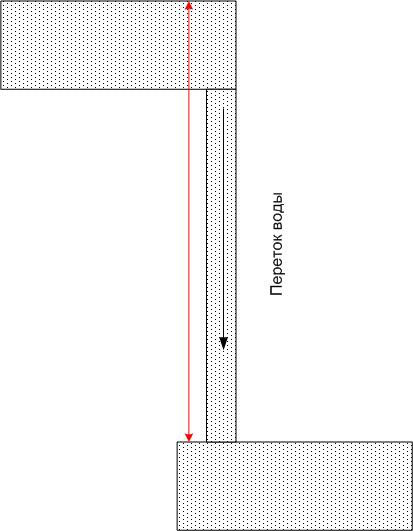
Similarly, if you connect a conductor to two points with different potentials, it will carry an electric currentdetermined not only by the resistance of the conductor, but also by the potential difference (but not by their absolute value). Continuing with the water analogy, we can say that the water in the upper basin will soon run out, and if there is no force to move the water back up (such as a pump), the flow will stop very quickly.

It is the same in an electrical circuit: to keep the potential difference at a certain level, a force is required that transports the charges (or rather, the charge carriers) to the point with the highest potential. This force is called the electromotive force and is abbreviated as EMF. EMF can be of different natures - electrochemical, electromagnetic, etc.
In practice, it is mainly the potential difference between the start and end points of the trajectory of the charge carriers that matters. In this case, this difference is called a voltage, and in SI it is also measured in volts. A voltage of 1 Volt can be spoken of if the field does the work of 1 Joule in moving a charge of 1 Coulomb from one point to another, that is, 1V=1J/1KL, and J/KL can also be the unit of potential difference.
Equipotential surfaces
If the potential of several points is the same, and these points form a surface, such a surface is called equipotential. For example, a sphere circumscribed around an electric charge has this property, because the electric field decreases equally in all directions with distance.
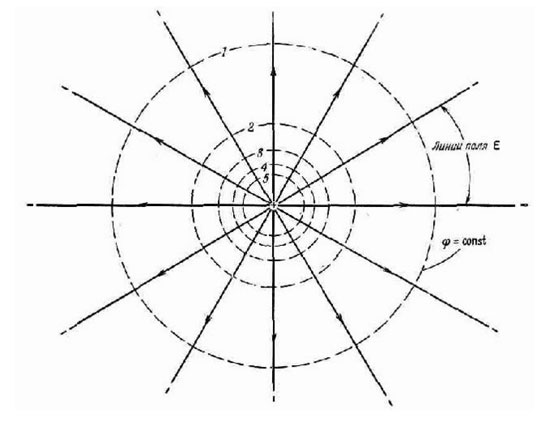
All points on this surface have the same potential energy, so no work will be expended when moving a charge on such a sphere. Equipotential surfaces of systems of several charges have a more complex shape, but they have one interesting property: they never intersect. The lines of force of the electric field are always perpendicular to the surfaces with the same potential at each of their points. If the equipotential surface is dissected by a plane, you get a line of equal potentials. It has the same properties as the equipotential surface. In practice, points on the surface of a conductor placed in an electrostatic field, for example, have an equal potential.
Once you understand the concept of potential and potential difference, you can begin to further study electrical phenomena. But not before, because without understanding the basic principles and concepts to deepen knowledge will not be possible.
Related articles:

